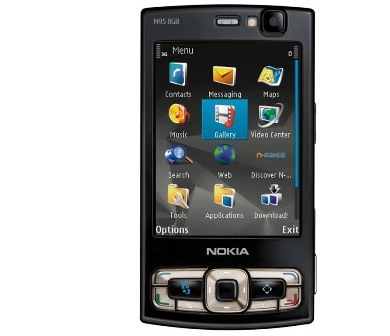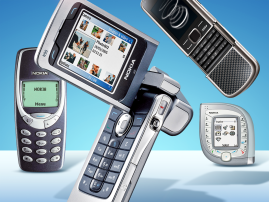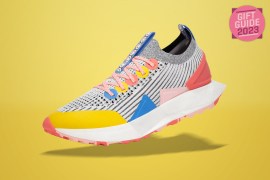Nokia N95 review
Bursting with an insane number of features, including a 5MP camera and sat-nav, the N95 is the smartest of all smartphones

There was only one smartphone Stuff wanted in its pocket in 2006 – Nokia’s N80. Feature-packed but pocketable, it defined a new standard in connectivity and had the best screen we’ve ever seen on a mobile.
Those Finns have clearly been glugging their sahti, though, because that was merely a taster for the convergence to follow. The N95 looks similar to its predecessor, but packs a 5MP camera, even more wireless connectivity (stereo Bluetooth and HSDPA, or 3.5G) and sat-nav. In short, it’s the smartest smartphone we’ve ever seen.
Travel guide
Sat-nav is the N95’s big selling point. Unlike most rival GPS units, it doesn’t come with maps pre-loaded, instead giving you free access to a planet’s worth of mapping which you can download via a supplied PC app or direct to your mobile. These then get stored on your MicroSD card, allowing you to look up addresses and plan routes without paying a penny.
But, wait – it isn’t fully functional sat-nav. To get this, you’ll need to pay for a licence, with prices ranging from £5 per month to £50 for three years. Once activated, you’ll get 3D mapping and voice directions, but you’ll also have to overcome one of the N95’s biggest design flaws – the GPS receiver is built in to the phone’s base. This means that getting a lock on your position can take a few minutes, and on foot you have to hold the phone awkwardly, as if proffering it to passers-by.
In-car reception is also patchy, and battery life is reduced to an hour or two when GPS is in use. Despite all this, though, it’s incredibly liberating to have a phone that can always get you home, show you the nearest train station or send your exact location by text.
Multimedia master
As a multimedia device, the N95 works very well. Just slide the screen down and you’re in the music player application with dedicated playback buttons at your fingertips. The N95 supports a wide variety of formats too: WMA files rented from Napster and the new ‘premium’ unprotected AAC files that Apple will soon be selling are both supported.
Bluetooth stereo means you can use wireless headphones, Real Video comes pre-loaded and the huge range of downloadable Series 60 apps – from an Ogg Vorbis player to Nokia’s free podcasting app – make it a versatile entertainer. The only big disappointment is the screen, which is bigger than the N80’s but has had its resolution reduced from 352×416 pixels to QVGA, making the web browser a little less fun to use.
The best camphone ever?
But what of the N95’s other big selling point, the 5MP camera? Thanks to Carl Zeiss autofocus optics, it’s certainly in the realm of the low-end compact camera, despite some suspect colour reproduction and oversharpened edges. The lack of optical zoom or decent flash, though, prevents it from being a true digicam or camcorder replacement.
Nevertheless, sharing your photos and video has never been easier. The N95 packs UPnP, which allows you to send and receive from compatible devices. While you wait for more of these gizmos to arrive, you can use the supplied composite TV cable to play video on your telly or music on your hi-fi.
The trouble with convergence
The N95 packs a staggering array of full-fat features, but making them instantly accessible has compromised the all-important feel of the device. The two-way sliding screen of our review unit had a distressing amount of wobble and the lightweight materials mean the phone lacks the pleasing heft and curves of the N80.
This is just nit-picking, though. The N95’s battery copes very well, lasting two days of heavy use, and its staggering feature-set means it’s by far the best smartphone on the planet. A truly titanic battle with Apple’s iPhone awaits this winter.



